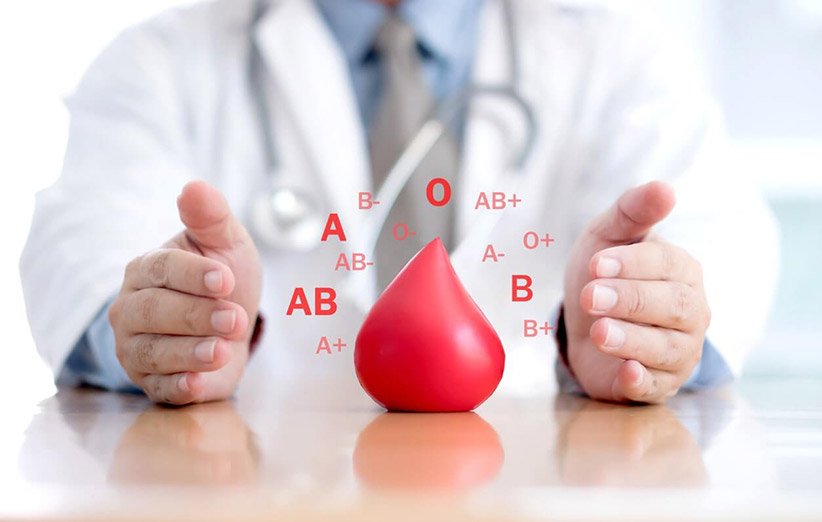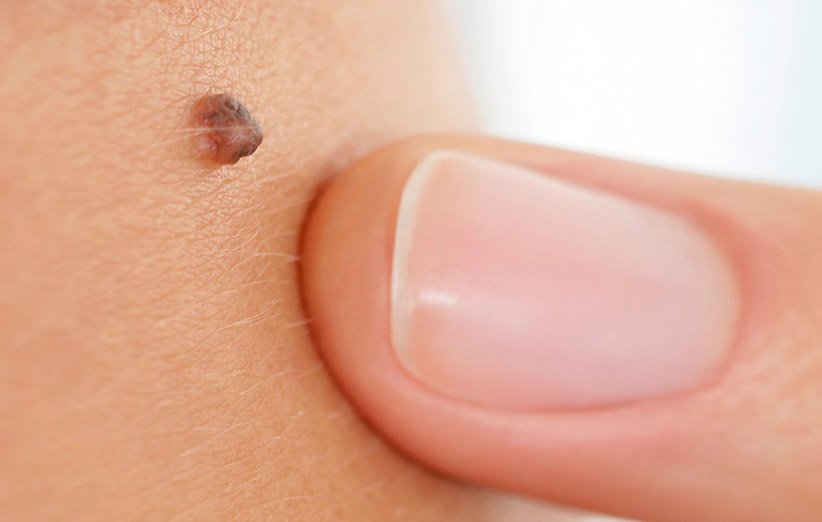Here are 6 health indicators you should know about yourself
Knowing the body makes it much easier to take care of our health now more than ever. Although you may know your height, weight, blood type, and some basic health statistics, how well do you know your body in general? We can diagnose and root out health problems if we know a few health statistics.
Understanding the body’s health statistics has many benefits. Medical experts say there are many areas and numbers from the mouth to moles, metabolism to other areas that help identify more information than you think and minimize future health risks.
Monitoring and managing some seemingly insignificant things can have a huge impact on your health. In many health-related cases, early diagnosis is the key, and many assessments can be performed by the individual.

1. Blood type
The first health statistic relates to blood type. Each blood group is determined by the presence or absence of antigens (A or B) or antibodies in the blood cell. Dr. Alexandra Krepps, an internal medicine specialist, explains that Rh is a protein found in the lining of red blood cells that causes blood types to be positive.
Knowing the type of blood you have is crucial since it determines how your body will transmit or receive blood. “Though an O-negative individual can transfuse blood into all blood groups since they lack the antigens A and B and the Rh factor, only an O-negative individual can receive blood,” explains Dr. Kreps. A person with a positive AB blood type and no antibodies that react with other blood types can also receive blood from all blood groups, but only a person with a positive AB blood type can do so.
Different blood types are associated with health problems, according to research. Blood type O, for example, is associated with a higher risk of gastric ulcers and a lower risk of blood clotting, whereas decreased blood types AB, B, and A are at risk for pancreatic cancer, respectively. Those with blood type AB are also more likely to suffer from dementia and cognitive impairment.
There is some evidence that linking certain blood groups with specific diets will improve digestion, increase energy, and help maintain a specific weight. It may also reduce the risk of cancer and heart disease.
In the case of a blood transfusion in the hospital, you may need to be tested again to confirm your blood type, or you may be given O-negative blood in an emergency since the chance of a blood reaction is usually lower.
2- Blood pressure
Blood pressure is the second most important health metric. “Despite many advances over the past few decades, cardiovascular disease is still the leading cause of death for both men and women,” says Dr. Michael Barber. Since the identification of blood pressure-related numbers, more emphasis has been placed on public health.
The American Heart Association defines normal blood pressure as less than 120 mm Hg systolic and less than 8 mm Hg diastolic. It increases when systolic blood pressure exceeds 120-129 mm Hg and diastolic blood pressure is normal.
Atherosclerosis is very obvious because often at different stages, such as systolic 130-139 or diastolic 80-89 and then in the second stage, systolic 140 or diastolic above 90, can lead to high blood pressure. Seizures or strokes associated with an increase in heart rate.
Measure your blood pressure at home. You can also see your doctor to check your blood pressure. “In general, high blood pressure is asymptomatic, but if the patient experiences symptoms such as chest pain, shortness of breath, back pain, numbness, weakness, changes in vision, or difficulty breathing.”. According to Dr. Barber. Experience talking, lowering blood pressure, and receiving immediate treatment are crucial.”
3. Cholesterol levels
Cholesterol is essential for survival, but high levels can cause serious health problems, particularly if you have high blood pressure. Cholesterol serves as a building block for cells, hormones, and bile production in the liver, but too much of it can cause plaque to form on the walls of arteries, also known as blocked arteries.
Generally, the American Heart Association recommends that total cholesterol be less than 200 milligrams per deciliter. The upper limit for cholesterol is 240 milligrams per deciliter. Anything above this high cholesterol level is calculated, but these parameters are often very high for people at risk for cardiovascular disease.
Normal low-weight lipoprotein (LDL) cholesterol or bad cholesterol should be less than 100 mg / dL, while high-density lipoprotein (HDL) cholesterol or good cholesterol should be more than 60 mg / dL.
You can measure your cholesterol levels with a simple blood test. These numbers can be reduced through healthy lifestyle changes such as avoiding smoking, exercising and eating a healthy diet. If lifestyle changes are not enough, cholesterol-lowering treatments or supplements can help. You should discuss the best way to lower your cholesterol levels with your doctor.
4. Triglyceride levels
Triglycerides increase bad cholesterol, particularly low-concentration, oxidized cholesterol, which causes arteries to clog. The higher the triglyceride level, the greater the risk of heart disease. Raising triglycerides lowers good cholesterol and increases the risk of disease.
Medical laboratories generally set a limit of 150 or 100 triglycerides. According to my 25 years of experience in preventing cardiovascular disease, triglycerides should be between 40-50 to have maximum effect.
Have your doctor check your triglycerides. It would be very useful if you could also measure your insulin level with it. Insulin resistance, a trigger for diabetes and pre-diabetes, can be assessed by fasting insulin levels. Smooth muscle in the walls of blood vessels proliferates more rapidly when insulin levels are high. Reducing the intake of simple carbohydrates, such as grains and fruits, can help reduce this number.
5. Mouth condition
Dr. Marc Lazare, a dentist in New York, asserts there is a fundamental connection between the mouth and other parts of the body, and many systemic diseases have roots in the mouth.
It has been found that plaque bacteria are associated with heart disease, and that people with gum disease are twice as likely to suffer a fatal heart attack and nearly three times as likely to suffer a stroke than those without gum disease. As a result of bacteria in the mouth, platelets accumulate in the bloodstream and form blood clots that clog blood vessels and damage heart valves.”
Studies have also shown that oral disease can exacerbate diabetes, lower the flow of nutrients to the body and eliminate waste products, weaken the ability of bone tissue to resist infection, and ultimately lead to other serious health problems. “People with diabetes are also at a higher risk for gum disease than usual.”
To minimize plaque buildup, Dr. Lazier recommends that you brush at least twice a day, use mouthwash and floss properly, and see your dentist every year.
Make sure to inform your dentist of the medications you are taking to treat diabetes. These drugs may reduce the flow of saliva and have a negative effect on the mouth and gums. Make sure to stay hydrated as much as possible if your saliva flow is reduced.

6. Mole on the body
The moles on the skin are usually colored and appear in childhood and during the first 25 years of life. The shape of the spots is often symmetrical and remains constant over time.”
It has been shown that some types of skin cancer have their roots in unusual moles, which often have irregular features such as uneven margins, deformations, and discolorations over time.
People with a lot of spots are statistically more likely to develop skin cancer, which can be fatal. “People with 10 or more unusual moles are often 12 times more likely to develop melanoma,” says Dr. Greenbum.
Dr. Green Bam stresses the importance of noticing and paying attention to changes in the body. Ideally, you should check your skin monthly. You should look for anything new, changed, or unusual in your skin. Specific problems include sores that do not heal after three weeks and continue to itch, flake, and bleed, or moles that are larger in size and appear pearly, clear, brown, black, or multicolored.
It is recommended that you see a dermatologist every year for an annual specialist examination. Dr. Greenbaum says people with unusual moles or melanoma should see a dermatologist more often.
To protect your skin, Dr. Green Bam recommends using SPF 15 or ideally SPF 30 or higher whenever you spend more time outdoors. He also recommends wearing wide-brimmed hats and UV sunglasses.
Apply sunscreen before leaving the house, and apply sunscreen to specific areas of the body, such as the neck, ears, arms, and legs during peak sun hours, which are often between 10 a.m. and 4 p.m.


